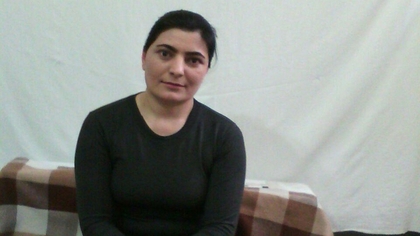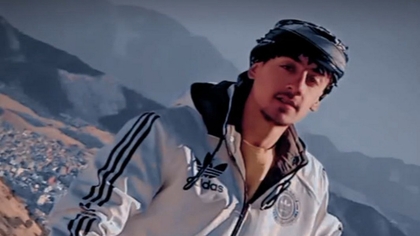Thousands of Pupils Are Addicted to Illicit Drugs in Iran
05:12 - 22 May 2015

Kurdpa: The Ministry of Education and Training finally admitted to the existence of pupil addicts in public schools, following years of denial that such a problem was non-present in schools.
The General Director of the Office of Social Harms Watch of the Education and Training Ministry officially stated on the state-run Channel Two that for years, we have accepted the threat of addiction in schools, Kurdpa reported quoting the official.
Nader Mansouri Kiani refrained from giving any statics and data in regards to addiction in schools; however, he recognized the one percent addiction among the 13 million students enrolled in Iranian schools, acknowledged by an advisor to the General Secretary of Iran’s Drug Control Office.
The advisor also confirmed the reduced age of addicts to as low as 15. “In the last 10 years, the addiction rate in schools has increased from a half percent to one percent, representing a double increase in the number of addicted students, not including recreational users,” he stated.
He further stated that 55 percent of the parents find out about their children’s drug abuse 5 years after the kids start using the drugs.
Despite the disclosure of the data by other regime officials, the spokesperson for the Ministry of Education and Training still denied the existence of student addicts in schools. Instead, he blamed family negligence for the spread of illicit drugs among students.
Last summer, an Iranian Islamic Revolutionary Guards Corps (IRGC) commander stated in a drug prevention symposium that 45 thousand students aged 15 to 19 are addicts in the country.
The Iranian office of the United Nations Office on Drugs and Crime had publicly stated that “Iran is second-largest consumer of cocaine in the world.”
Harsh economic conditions, strict social boundaries, abundance of drugs in the country “have helped to turn ever more Iranians to hard drugs,” The Economist stated in an article in 2013. “According to Iran’s own figures, 2m Iranians in a population of 75m are addicted, the world’s highest incidence. Most experts put the real figure even higher,” it further added.
Some blame Iran’s drug problem on the unchecked paramilitary forces of IRGC and its Quds Force. “The problem is that while the Iranian regime is fighting drug lords on its eastern borders, much of the drugs it seizes are being sold by the Revolutionary Guards to the same people they are asking for additional funding to fight the drug trade—the Europeans,” wrote Emanuele Ottolenghi in an opinion piece on the Weekly Standard.
“Iran has a serious drug problem. According to the 2010 UN Drug World Report, 42 percent of world opium not converted into heroin is used in Iran. But much of it just transits onto European markets, under the helpful supervision of the IRGC,” he concluded.
Despite harsh sentences for drug possession and trade offences, including high number of executions - 250 executions just in 2015 – many in Iran turn to drug trafficking business, mainly due to lack of employment opportunities, a lucrative illicit drug black market, and effortless drug accessibility.
Crystal methamphetamine, ecstasy pills and cannabis are among the most favourite and frequently used drugs among pupils and university students in Iran.
Writing by Kurdpa Staff Writers and editing by Hazhir B.
The General Director of the Office of Social Harms Watch of the Education and Training Ministry officially stated on the state-run Channel Two that for years, we have accepted the threat of addiction in schools, Kurdpa reported quoting the official.
Nader Mansouri Kiani refrained from giving any statics and data in regards to addiction in schools; however, he recognized the one percent addiction among the 13 million students enrolled in Iranian schools, acknowledged by an advisor to the General Secretary of Iran’s Drug Control Office.
The advisor also confirmed the reduced age of addicts to as low as 15. “In the last 10 years, the addiction rate in schools has increased from a half percent to one percent, representing a double increase in the number of addicted students, not including recreational users,” he stated.
He further stated that 55 percent of the parents find out about their children’s drug abuse 5 years after the kids start using the drugs.
Despite the disclosure of the data by other regime officials, the spokesperson for the Ministry of Education and Training still denied the existence of student addicts in schools. Instead, he blamed family negligence for the spread of illicit drugs among students.
Last summer, an Iranian Islamic Revolutionary Guards Corps (IRGC) commander stated in a drug prevention symposium that 45 thousand students aged 15 to 19 are addicts in the country.
The Iranian office of the United Nations Office on Drugs and Crime had publicly stated that “Iran is second-largest consumer of cocaine in the world.”
Harsh economic conditions, strict social boundaries, abundance of drugs in the country “have helped to turn ever more Iranians to hard drugs,” The Economist stated in an article in 2013. “According to Iran’s own figures, 2m Iranians in a population of 75m are addicted, the world’s highest incidence. Most experts put the real figure even higher,” it further added.
Some blame Iran’s drug problem on the unchecked paramilitary forces of IRGC and its Quds Force. “The problem is that while the Iranian regime is fighting drug lords on its eastern borders, much of the drugs it seizes are being sold by the Revolutionary Guards to the same people they are asking for additional funding to fight the drug trade—the Europeans,” wrote Emanuele Ottolenghi in an opinion piece on the Weekly Standard.
“Iran has a serious drug problem. According to the 2010 UN Drug World Report, 42 percent of world opium not converted into heroin is used in Iran. But much of it just transits onto European markets, under the helpful supervision of the IRGC,” he concluded.
Despite harsh sentences for drug possession and trade offences, including high number of executions - 250 executions just in 2015 – many in Iran turn to drug trafficking business, mainly due to lack of employment opportunities, a lucrative illicit drug black market, and effortless drug accessibility.
Crystal methamphetamine, ecstasy pills and cannabis are among the most favourite and frequently used drugs among pupils and university students in Iran.
Writing by Kurdpa Staff Writers and editing by Hazhir B.



